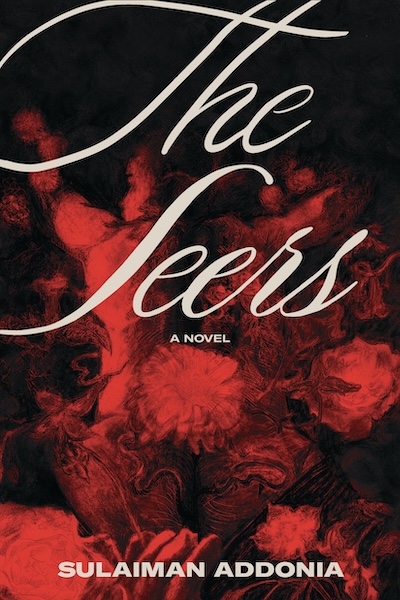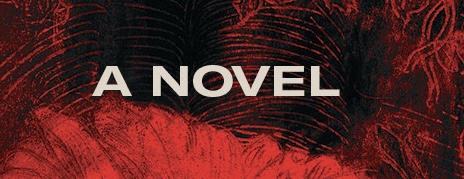Electric Literature is pleased to reveal the cover of The Seers by Sulaiman Addonia, which will be published by Coffee House Press on April 22, 2025. You can pre-order your copy here.
With echoes of Zora Neale-Hurston and Clarice Lispector, Sulaiman Addonia turns from the broader immigration narrative of land and nations to look closely at the erotic and intimate lives of asylum seekers.
In the squares of Bloomsbury, near an orphanage in Kilburn, a young Eritrean refugee named Hannah grapples with a disturbing sexual story in her mother’s diary. As Hannah moves through the UK asylum system haunted by this tale, language becomes a tool of survival and time becomes a placid lake in which the Home Office drowns her.
In a single, gripping, continuous paragraph, Sulaiman Addonia’s The Seers moves between past and present to paint a surreal and sensual portrait of one life among thousands. For Hannah, caught between worlds in the endless bureaucracy of immigration, the West is both savior and abuser, refuge from and original cause of harm, seeking always to shape her—but never succeeding in suppressing her voice.
Here is the cover, designed by Sarah Schulte, artwork by Malachi Lily.

Author Sulaiman Addonia: “For centuries, writers and artists have been encouraged to embrace subtlety. While this may have led to great art, it might also have limited creative expression. The Seers breaks away from this tradition, showcasing exuberance instead of restraint. So when Malachi Lily, the designer of the artwork, asked if I was comfortable with sex and sexuality being depicted on the cover, I immediately responded with a resounding yes.
I was overjoyed when I saw the cover, and even more pleasantly surprised when I was told that the Coffee House Press staff loved it. Throughout my career, I have always asked publishers for bold covers that convey the audacity and playfulness of my characters. This was the first time I felt my dream had come true.
I have been influenced by feminist artists who have sought to subvert the male gaze, particularly the surrealist artist Leonor Fini. Her paintings depict men embracing their feminine side and displaying their beauty. I am reminded of her work when I see Malachi Lily’s design, which shows a man defying stereotypes, freely expressing his desires, being vulnerable with his female partner, and opening his body to her hunger.”
Artist Malachi Lily: “I was enraptured by the story’s roiling container of a fuck, and I wanted to highlight Hannah topping her friend O.B.B. in the park. Hannah’s hand, firm-potent-hungry, exposes the vulnerable offering of O.B.B., who is bursting into a garden in her presence. This bursting is beautiful but painful as thorns and blooms weave through the skin. The flowers are roses (the national flower of England), gerberas (the national flower of Eritrea), and different species of nightshade flowers that are common in Eritrea. Flowers like the Devil’s Trumpet and Solanum incanum are very poisonous; they are beauty encapsulating death, and have some hallucinogenic properties and associations with witches.
I always do divination readings for my work, and I received cards emphasizing this story and cover’s relationship to fire. The story burns, eating itself from the inside out. While looking for reference images, I sought color palettes and value structures focused on heat, intensity, shadow, and light.
By choosing an intense color palette and contrast, as well as filling the image with floral information, I intentionally and playfully distorted and obscured the salacious activity/the submission/the ass splitting into a flower on this cover, drawing people in to want to know more…and ensuring this erotic masterpiece of a novel is not immediately banned.
I’ve been a mixed-media artist for a while. Yet, this piece catalyzed my relationship with charcoal and graphite into something more raw and physical, matching the visceral quality of the story. I used a sharp 7H pencil to carve into the paper, like etching, and the charcoal acted like ink over a linocut or woodblock print. I will be taking this carving technique forward into my work.”
Take a break from the news
We publish your favorite authors—even the ones you haven’t read yet. Get new fiction, essays, and poetry delivered to your inbox.
YOUR INBOX IS LIT
Enjoy strange, diverting work from The Commuter on Mondays, absorbing fiction from Recommended Reading on Wednesdays, and a roundup of our best work of the week on Fridays. Personalize your subscription preferences here.
